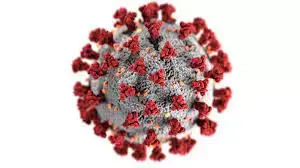They tested people to check for evidence of asymptomatic infection and found that people who had two doses of the nasal vaccine showed no signs of infection after three months.
CONCLUSION. A 2-dose intranasal vaccination regimen using NB2155 was safe, was well tolerated, and could dramatically induce broad-spectrum spike-specific sIgA in the nasal passage. Preliminary data suggested that the intranasal vaccination may establish an effective mucosal immune barrier against infection and warranted further clinical studies.
https://insight.jci.org/articles/view/180784
"At least 86.2% participants who completed 2 [nasal vaccine] doses maintained uninfected status, likely without even asymptomatic infection, for at least 3 months.
https://xcancel.com/EricTopol/status/1838937705977110991#m
Seems like we are getting closer to better vaccines being approved.


Not yet. Stage 1 clinical trials are not meant to assess efficacy, that's what the next stage will cover. For more info, this page gives a good overview on clinical stages under the "Testing the Vaccines in People" heading. My familiarity is from the US, so it's possible stages are different in China.
I'm not going through the entire study now because it's late and I'm sick, but they would need to exclude those who were infected before the date they are deemed "fully vaccinated" as this would affect their immune response and obfuscate their results, particularly in terms of protection. They would want to see protection only after full vaccination in this study design
Main takeaways from this paper:
Intranasal vaccination was well-tolerated (it doesn't suck to get, meaning it could move to the next trial stage),
More studies are needed to be sure, but there were indications that an Intranasal vaccine could be effective in preventing infection.
This will be a lot of simplification and glossing over details, but the main immunological difference in intramuscular (IM) vs Intranasal (IN) vaccination is the type of protections they confer...
The goal with IM is typically to help reduce the length and intensity of an infection, to induce a biological memory to help you fight off an infection, not to completely prevent it from happening. IM vaccination activated IgG, so you'll see them look for IgG levels and T-cell responses. The type of IgG activation helps tell you what type of T helper cell profile skewing is created, and different profiles can correlate with protection for specific diseases.
Aside from not having to get a shot, IN vaccines aim to create an IgA response rather than just IgG. IgA is able to actively prevent infections from ever occurring by offering protection within your mucous membranes. This is in addition to the type of protections you get from IM administration. The drawbacks to IN vaccination are mainly that it's harder to induce the same levels of protection as with IM. You have to deliver the vaccine to cells in the mucous membrane, which is harder, because mucous acts as a barrier to delivery of your active vaccine components and clears on the order of minutes. This means dosing is different and this plus the difference in immune cells and trafficking of active components can lead to lower immune responses.
IN administration has been used for a relatively short time (in vaccine history), but it's shown some success (influenza and allergies in particular come to mind) and is a focus for many ongoing programs because of the potential for mucosal immunity. Creating effective mucosal immunity will not only protect the vaccinated individual, but prevent spread, which is something the IM vaccines can't do.